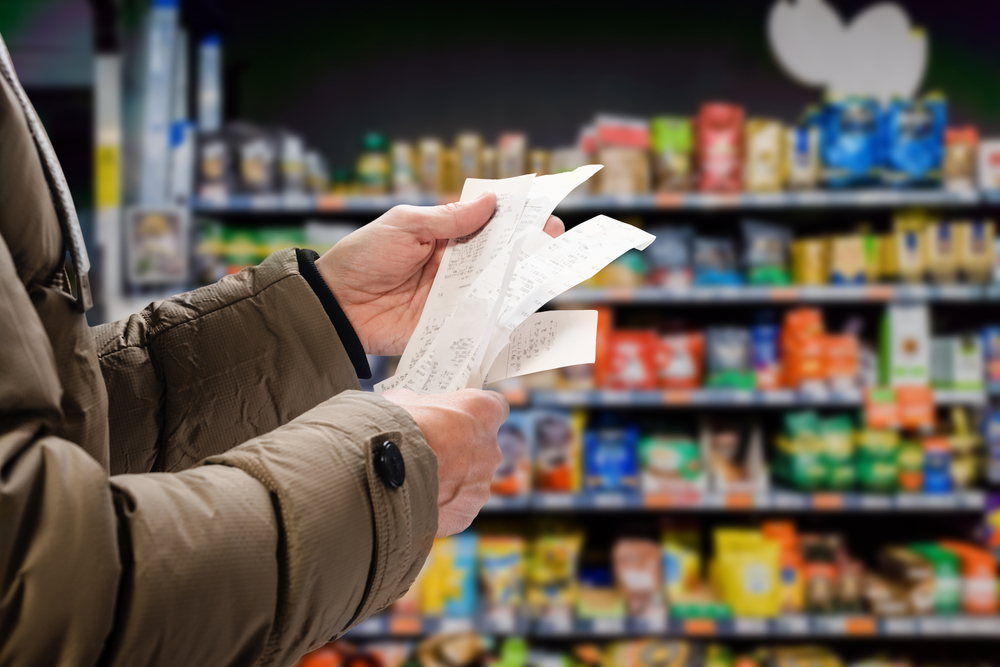Household Bills
Shoppers turn to loyalty schemes and own-label goods to fight rising prices

Following steep rises in food prices, shoppers have made a “massive shift” in the way they buy groceries, new data claims.
Since the pandemic there have been several major changes to the way we shop for food including buying more own-label items, making fewer trips to the supermarket, and using loyalty schemes to cut costs.
This has been caused by huge rises to food prices but some trends, such as the rise of discount supermarkets, started before the current cost-of-living crisis, the data from Kantar for the BBC showed.
Food prices have risen significantly over the last year and the latest figures from Kantar show that shoppers who don’t change their habits are now spending £833 more on food per year.
One way shoppers are trying to fight rising prices is by choosing cheaper own-brand items. In 2005, around 45% of grocery sales were of own-brand products and this rose to 51% by the end of 2022, the data showed.
This comes as food prices are rising for the fastest rate for 45 years, according to the Office for National Statistics and the cost of basics like porridge and cheese are up 80%. The Resolution Foundation also recently said that food prices have taken over from energy bills as the biggest problem with the cost-of-living crisis.
Many supermarkets have responded by expanding their own-label ranges and recently Sainsbury’s dropped the price of 40 own-label dairy items by up to 60%.
The launch of Asda’s ‘Just Essentials’ range helped the supermarket grow its market share by 10.6% to 13.9% in May, according to Kantar.
Shoppers are also making less trips to the supermarket and now households make an average of 16 shops a month, compared to 18 before the pandemic. There has also been a fall in the number of people shopping online for their food, down to 11.7% now compared to 15.4% in February 2021.
Discount supermarkets and loyalty schemes
The discount supermarkets have been slowly and steadily rising in popularity over the last few years. In the 12 weeks to 14 May, sales at Aldi and Lidl rose by more than 23% year-on-year, more than twice as fast as sales at Tesco and Sainsbury’s, the data showed.
Aldi has consistently been voted as the UK’s cheapest supermarket by the consumer group Which? and it also announced a big expansion this year hiring 6,000 new staff.
Shoppers are also turning to loyalty schemes to cut the cost of their grocery shop. It comes as the number of in-store discounts at supermarkets have fallen to 25%, from 40% in 2014.
Nearly all of the major supermarkets have launched or re-launched loyalty schemes recently.
At Sainsbury’s and Tesco, for example, shoppers with a Nectar or Clubcard can now get exclusive access to cheaper prices.
Morrisons has also re-launched its loyalty scheme, recently getting rid of the My Morrisons deal, re-launching its Morrisons Fivers, and giving cheaper prices to members.
Yet despite these schemes, the supermarkets have been criticised for not helping customers enough. Many of the big shops, for example, do not sell their budget ranges in smaller convenience stores.
Ele Clark, Which? retail editor, said: “Supermarkets aren’t currently doing enough to help shoppers. Which? believes the big retailers have a responsibility to ensure everyone has easy access to basic, affordable food ranges at a store near them, and to provide transparent and comparable pricing so people can easily work out which products offer the best value.”